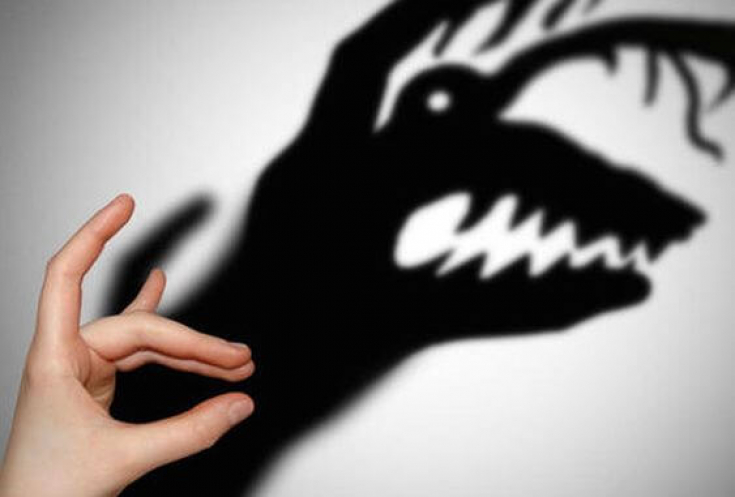Those who have experienced panic attacks describe them as a terrible, often sudden and unexpected experience, where fear becomes strong and dominant in anticipation of a new attack.
Consequently, one situation easily leads to a real panic disorder, due to "fear of fear" rather than anything else. A person is quickly drawn into a huge vicious circle, often causing so-called "agoraphobia" in its wake. That is, the anxiety associated with being in places, situations from which it is difficult/embarrassing to leave, where help may not be available when a panic attack occurs unexpectedly.
The fear of another seizure causes a person to be afraid and anxious to leave the house alone, ride the train, bus, drive, stay in the crowd, stand in line, and so on.
The editors of estet-portal.com offer to understand how to cure panic attacks.
- What are the symptoms and intensity of panic attacks
- Peculiarities of panic disorder and its causes
- Psychological approach to the treatment of panic disorder
What are the symptoms and intensity of panic attacks
Symptoms come on suddenly, peak rapidly (average 10 minutes) and last about 20 minutes.
Subscribe to our page on Instagram!

The most common physical symptoms of panic attacks are:
- Palpitations / tachycardia
- Fear of losing control (e.g., fear of doing something embarrassing in public, fear of running away when panicked or lost)
- Heel sensations, instability (vertigo and vertigo)
- Tremor or fine tremor
- Sweating
- Shortness of breath, sensation of suffocation
- Chest pain, chest discomfort
- Chills, hot flashes
- Numbness, tingling
- Nausea, abdominal discomfort
- Fear of death
- Feelings of derealization (perception of the outside world as strange and unreal, feelings of dizziness and detachment) and/or depersonalization (altered perception of self, characterized by feelings of detachment, alienation from one's own thought processes or body)

Not all symptoms are necessary to trigger feelings of panic. The intensity and frequency of symptoms vary widely with time and circumstances. Some people experience relatively mild attacks (for example, once a week) that are regular for several months. There are other situations – short, more frequent attacks, possibly with less intense symptoms (eg, daily for week).
Features of panic disorder and its causes
Panic attacks are common, affecting more than 11% of adults each year. Most people recover from panic attacks without any treatment, for others, the worsening of the attacks leads to the development of panic disorder. Most scientists believe that they are the result of the interaction of thoughts, emotions and physical processes.
Subscribe to our page on Facebook!
Panic Disorder is the worry about subsequent panic attacks and/or changing behavior to avoid them. Panic disorder affects 2-3% of the population within 1 year. Women are twice as likely to panic as men.

In general, especially during a stressful period, an event can cause panic disorder in people with a genetic and psychological predisposition to anxiety disorders. Therefore, it may be that the normal level of anxiety we are all born with can increase and explode in episodes of panic, more or less intense, such as after a stressful event. There are many reasons for panic attacks.
Among the most common causes:
- Genetic predisposition
- Stress
- Caring for your health
- Unpleasant feelings caused, for example, by personal, professional problems.
When they are not eliminated or cannot be eliminated for various reasons, they remain hidden, causing an increase in anxiety over time, which can therefore cause a panic attack.
Psychological approach to the treatment of panic disorder
Panic attacks and anxiety disorders are treated with cognitive behavioral therapy.
Studies from different countries show that more than 80% of people get rid of panic attacks after a short period of treatment.
Panic disorder therapy has 5 main goals:
- Find and break down sources of stress.
- Increase tolerance for anxiety, discomfort, e.g. through mindfulness, and restore a sense of security by reducing sensitivity to the physical (tachycardia, tremors, shortness of breath, etc.), mental (fear of losing control) onset of panic attacks.
Reduce the catastrophic misinterpretation of threats, patterns of fear and danger underlying physical and mental conditions.
Increased cognitive reappraisal skills, leading to the acceptance of a realistic alternative explanation for symptoms that cause fear, pain.
Remove avoidance and other dysfunctional behaviors.
treatment of panic attacks in order to break the vicious circles that cause such a state.
Main stages of psychotherapy
Cognitive techniques. In therapy, verbal strategies are used to change automatic anxious thoughts (eg I will have a heart attack if I swallow, etc.). This means that over time, a person learns not to be afraid of the physical sensations of anxiety. Not being afraid of it, learning to live with it, just waiting for it to pass, you avoid the escalation of anxiety that leads to panic.
Behavioral techniques. Verbal strategies refer to methods to change the problematic behavior that supports the disorder. First of all, it is necessary to gradually resist the tendency to avoid fearful situations. It is also necessary to help the person expose himself to the physical sensations that are bothering him (eg, tachycardia) through sessional exercises and resuming activities that should be avoided.
For example, the patient is escorted along the path to drink coffee, climb the running stairs, play sports, etc., they should become part of his life. Finally, it is necessary to gradually abandon the so-called "protective behavior" that gives illusory security.

Experimental Techniques. Finally, relaxation techniques and especially strategies that increase the subject's ability to accept negative emotions can be useful. In particular, mindfulness meditation and experiential techniques.
Further interventions. First of all, it is necessary to regain freedom of movement on your own and gain a sense of mastery over the panic phenomenon. Therapy can then continue, working on the life-history elements of the resulting vulnerability of the person. Therefore, it is important to restore life history, significant connections, sentimental and social relationships.
Trauma counts, including the first experience of panic. Trauma is being considered, including the first experience of a panic attack.
Medications for panic attacks. Pharmacological treatment of panic and agoraphobia, although often not recommended (at least as a single treatment), is mainly based on two classes of drugs: benzodiazepines and antidepressants.
Don't ignore the signs of panic attacks, if they occur frequently, they alienate you from reality, disrupting socialization. You have to talk to your fear that "you" and not let him control your fulfilling life.Be healthy!






Add a comment